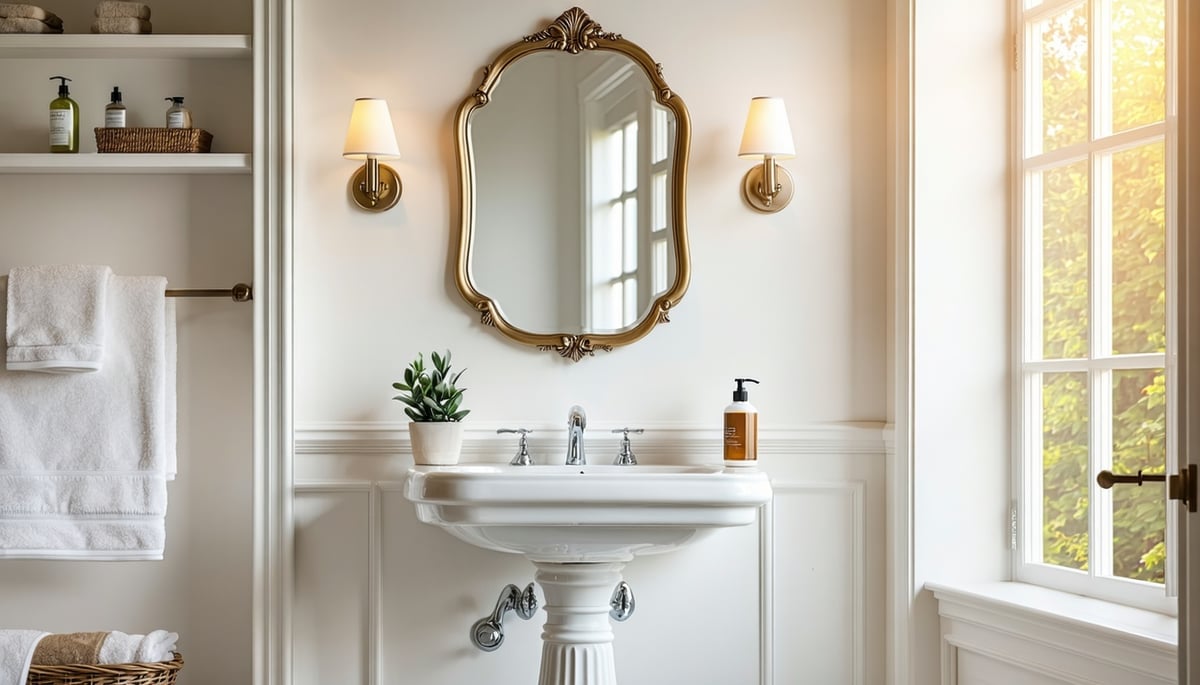Bathroom remodels are among the most popular home improvement projects, and with good reason. A well-done bathroom update can result in up to a 75% return on your investment right away. But there are some trouble spots you’ll want to look out for. Here are 8 bathroom remodel mistakes to avoid.
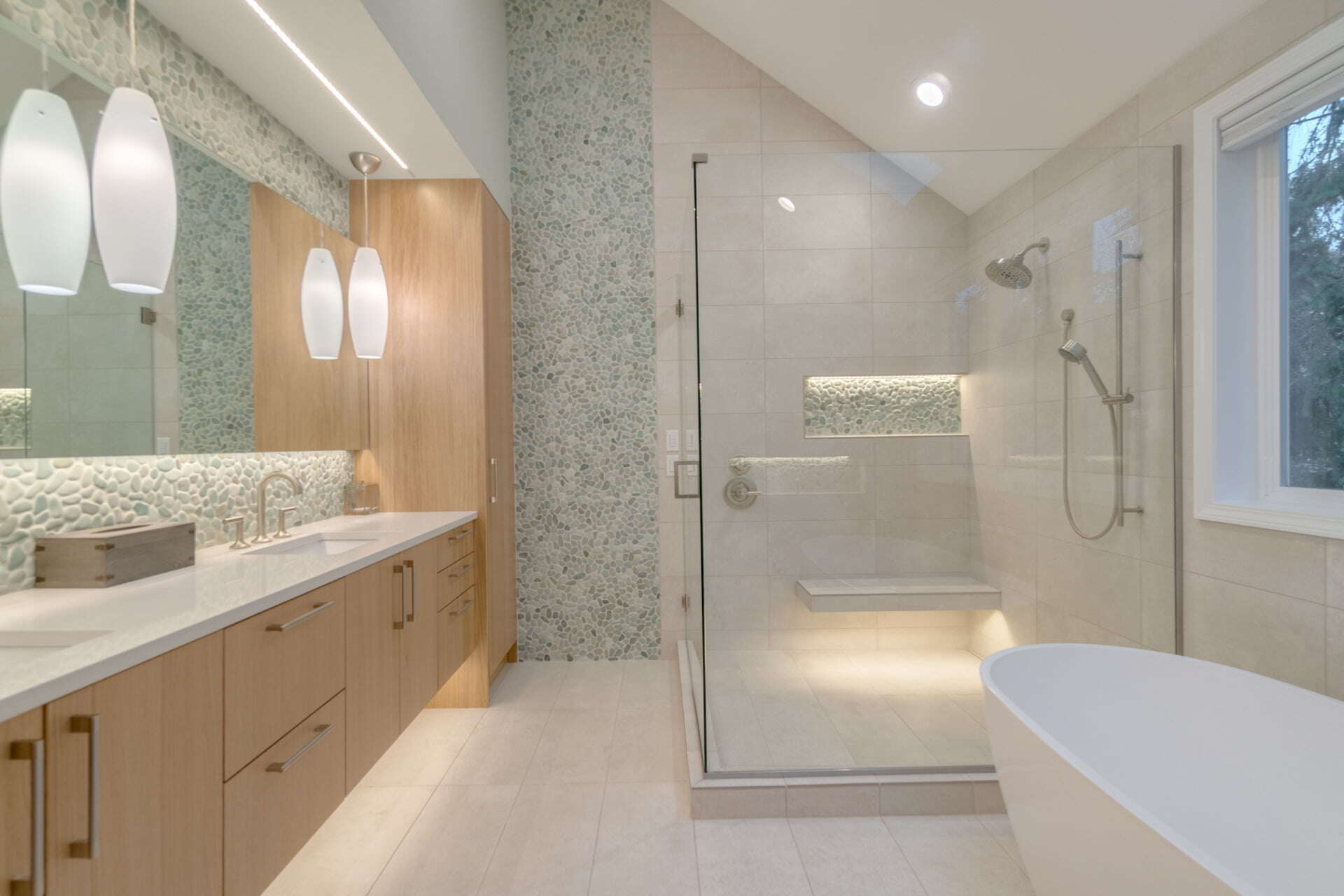
1. Not having a detailed remodel plan
As with any significant home improvement project, it’s critical that a clear plan is in place to help avoid budget and timeline overruns. Whatever size your bathroom is, take the time to plan out the space and determine where things will go. Which area will be reserved for the shower, for example? Where will the toilet go? Is there enough room for that double vanity you’ve been eyeing? Installing a new sink only to find that you need to move it later on is a surefire way to shred your budget, so planning out the space beforehand can be beneficial to both your wallet and your timeline.
2. Poor space planning
This is related to the issue above, but is more specific to the function of the space and ensuring it adheres to the proper building codes. If you’re moving plumbing or removing walls, you want to make sure all of that work satisfies existing building codes for minimal spacing guidelines.
For example, a standard toilet requires at least one foot of space from the back wall to the start of the toilet flange/drain. Too little space could require you to cut into the drywall to make the toilet fit.
In addition, you want to ensure that the placement of fixtures and finishes results in a space that ends up being comfortable to use. You want to avoid things like the shower door banging into your toilet when you try to open it. Or having to do body contortions when reaching for the toilet paper. This is where good space planning comes in.
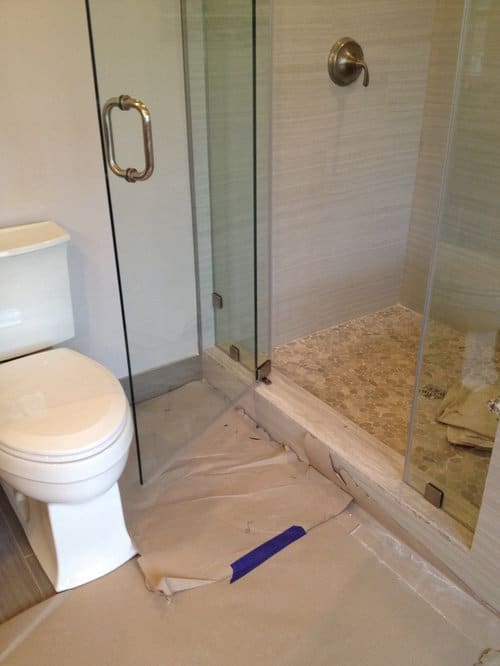
3. Making the whole remodel DIY
The next bathroom remodel mistake to avoid is trying to do it all yourself, especially when it comes to the more complex parts of the project. You may feel comfortable doing some demo work, laying down tile, and even installing the flooring, but some remodel work should be left to the pros. That’s especially true for things like plumbing, electrical work, and sophisticated shower stalls. For example, if you plan to add high-end features like multiple shower heads and electronic shower panels, you want to make sure these are installed correctly to avoid any harm to you or your home.
4. Installing improper flooring
Picking the proper material not only helps protect your floor, it also can ensure the integrity of the underlying subfloor structure. Chances are, you’ve heard the stories, or seen firsthand, bathrooms with carpet floors. Apart from trapping moisture — which can lead to mold and health issues — it can be difficult to keep them and the subfloor clean and dry in a space where water is so prevalent.
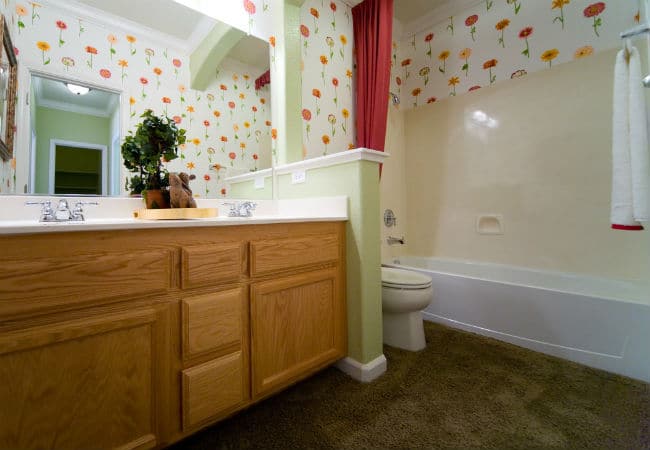
While carpet is an extreme case of the type of flooring not to use in bathrooms, there are other materials to avoid as well. For example, solid or engineered hardwood, and laminate may not be able to provide optimal water resistance.
Instead, consider materials like ceramic or porcelain tile or luxury vinyl plank. They all resist water and are very durable. Plus, they come in a variety of shapes, sizes, and colors to complement the design of your space.
5. Neglecting proper ventilation
A good ventilation system and bathroom fan can not only help avoid fogged up mirrors after you come out of the shower, they can also help ensure the health and longevity of the space. Failing to properly ventilate a bathroom can result in moisture being trapped in the air, which could lead to mold and mildew build-ups. That can be bad for you and also for the remodel itself.
A quality bathroom fan can cost a few hundred dollars — and the more square footage the space has, the more powerful fan the you’ll want to get — but this is one investment that you don’t want to overlook.
6. Going high-end for everything
Remember when we mentioned that a well-done bathroom remodel can result in up to a 75% return on investment right away? Well, one way to eat into that return is to opt for luxury features when they may not be necessary.
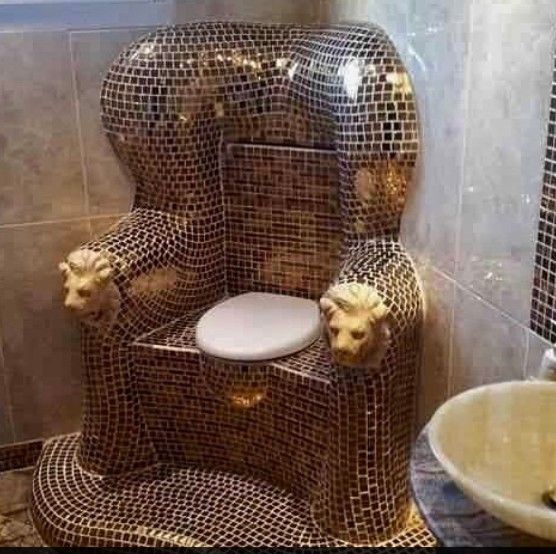
That’s not to say you should go for the cheapest materials or fixtures — quality is always important. But there are some cases where going high-end doesn’t always make sense, especially if you’re on a tight budget. For example, forgoing the most expensive tile in the showroom for a more cost-effective one or deciding against those designer lighting fixtures for something as effective, but more affordable could help stretch your budget without sacrificing the work.
Where to save comes down to your budget and personal preferences, so if a true luxury shower is a must-have, then definitely budget for that, but also keep an eye out for areas where you’re comfortable skipping the best of the best.
7. Jetted tubs
One of the most common items we remove when doing master bath remodels these days are existing jetted tubs. Huge in the 1990s, these bathroom space hogs have seen their heyday. That’s not to say you need to skip the tub altogether, but there are more economical, and space-saving ways to get the tub experience in your new bathroom. For instance, clawfoot tubs can add a nice mix of old and new to your space and many used ones can be refurbished for a just a few hundred dollars.
But if a tub isn’t important to you, using the former tub space for a large walk-in shower will likely result in a better return on your investment and be more attractive to home buyers if you decide to sell in the future.
8. Ignoring the little things
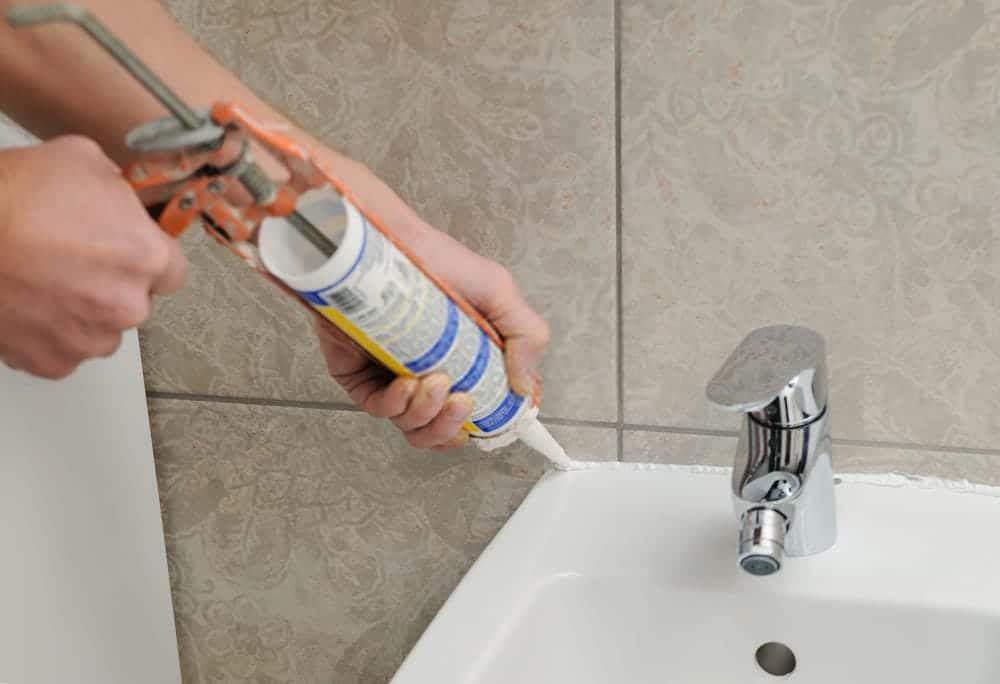
It can be tempting to want to wrap up your project, especially the closer you get to the end of what may have been a lengthy remodel. But try not to overlook the minor things like proper caulking around the toilet or shower, forgetting to clean up a stray spot of tile grout, or neglecting to fix slightly misaligned vanity cabinets. Chances are you’ll notice these each time you use your bathroom and they will become nagging reminders of a job left unfinished.
Working with a design/build firm will help ensure these details are all mapped out and accounted for before and during construction, but it’s a good practice to have an idea of where you’d like things to go in your new bathroom space and what you want it to look like even before you start meeting with potential contractors. Whether you plan to tackle your bathroom remodel on your own or with the help of a design/build team, we hope you find these tips handy!
Are you thinking about doing a bathroom remodel and aren’t sure where to start? We’re happy to discuss your project. Simply schedule a conversation with us!
Related Links
- How to Pick the Right Slab Shower
- Budgeting for a Bathroom Remodel
- How Much Does a Tile Shower Cost?
- Portland Bathroom Remodel: What’s It Going to Cost Me?


